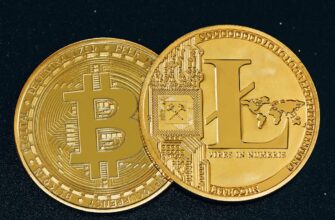- What is Crypto DPR? Unpacking Deeper Network’s Vision
- How Deeper Network’s Technology Works
- Key Features and Benefits of the DPR Ecosystem
- DPR Tokenomics: Utility and Market Position
- Getting Started with DPR: A Step-by-Step Guide
- The Future of Crypto DPR and Decentralized Internet
- Frequently Asked Questions About Crypto DPR
- Is DPR a good investment?
- How much can I earn with a Deeper device?
- Does DPR require special technical knowledge?
- What’s the difference between DPR and VPNs?
- Where can I buy DPR tokens?
What is Crypto DPR? Unpacking Deeper Network’s Vision
Crypto DPR refers to the native cryptocurrency of Deeper Network, a decentralized ecosystem aiming to revolutionize web infrastructure. Launched in 2018, DPR (Deeper Coin) powers a unique blockchain project focused on enhancing internet privacy, security, and accessibility through decentralized hardware devices. Unlike traditional VPNs or firewalls, Deeper Network combines blockchain technology with physical hardware to create a user-owned web3 gateway – making DPR a critical component in the future of decentralized networking.
How Deeper Network’s Technology Works
Deeper Network operates through a three-layer architecture that integrates:
- AtomOS: A lightweight operating system running on Deeper devices
- DPN (Decentralized Private Network): A blockchain-based VPN alternative
- Proof of Credit (PoC): An eco-friendly consensus mechanism
Users install Deeper Connect devices (mini-computers) in their homes to share bandwidth and route traffic securely. In return, they earn DPR tokens through the unique Proof of Credit system – rewarding participation without energy-intensive mining. This creates a self-sustaining “privacy mesh” where every participant strengthens network security.
Key Features and Benefits of the DPR Ecosystem
- Truly Private Browsing: Military-grade encryption with no data logging
- Blockchain Firewall: Real-time threat blocking at network level
- Bandwidth Sharing Economy: Earn DPR for contributing resources
- Cross-Chain Compatibility: Supports Ethereum, Binance Smart Chain, and Polkadot
- Decentralized Web Gateway: Access dApps and Web3 services seamlessly
DPR Tokenomics: Utility and Market Position
With a fixed supply of 10 billion tokens, DPR serves multiple functions:
- Payment for Deeper Connect hardware and services
- Staking for network security and governance voting
- Rewards for bandwidth sharing and node operation
- Gas fees for on-chain operations
Currently ranked among top 500 cryptocurrencies by market cap, DPR maintains liquidity on exchanges like Gate.io, KuCoin, and Uniswap. Token distribution includes 30% for ecosystem development, 20% for team, and 50% for community incentives.
Getting Started with DPR: A Step-by-Step Guide
- Acquire a Deeper Connect device (Pico, Mini, or Nano models)
- Purchase DPR tokens on supported exchanges
- Stake DPR to activate device features and earn rewards
- Share bandwidth to accumulate Proof of Credit
- Participate in governance via Deeper Chain
The Future of Crypto DPR and Decentralized Internet
Deeper Network’s roadmap includes:
- Integration with IoT and smart home ecosystems
- Expansion of decentralized CDN services
- Partnerships with web3 projects for enhanced interoperability
- DPR-based DeFi applications for token utility expansion
As internet privacy concerns grow, DPR’s value proposition positions it as a potential cornerstone of the decentralized web infrastructure.
Frequently Asked Questions About Crypto DPR
Is DPR a good investment?
DPR offers real-world utility in a growing privacy tech sector, but like all cryptocurrencies, carries volatility risks. Research the project’s development progress and market trends.
How much can I earn with a Deeper device?
Earnings depend on device model, bandwidth contribution, and DPR staking. Current estimates range from $5-$50 monthly at average token prices.
Does DPR require special technical knowledge?
No. Deeper devices feature plug-and-play setup with automatic configuration. The dashboard simplifies staking and rewards tracking.
What’s the difference between DPR and VPNs?
Traditional VPNs rely on centralized servers that can log data. DPR’s decentralized network routes traffic through user-owned nodes with zero data retention.
Where can I buy DPR tokens?
Major exchanges include Gate.io, MEXC, and Uniswap. Always use official links from Deeper Network’s website to avoid scams.








